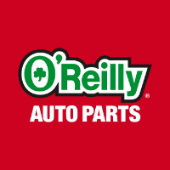-
Welcome to Auto Parts Forum
Whether you are a veteran automotive parts guru or just someone looking for some quick auto parts advice, register today and start a new topic in our forum. Registration is free and you can even sign up with social network platforms such as Facebook, X, and LinkedIn.
The Evolution of Automotive Fuel Systems
-
Similar Topics
-
By Counterman
link hidden, please login to view announced the completion of the previously announced acquisition of AX V Nissens III APS ( link hidden, please login to view), European manufacturer and distributor of aftermarket engine cooling and air conditioning products with a growing array of vehicle control technologies. Under the terms of the agreement, SMP has acquired all the issued and outstanding shares of Nissens for approximately $390 million (€360 million), net of cash and assumed debt and subject to post-closing adjustments, from Nordic private equity firm Axcel and the Nissen family, according to a news release announcing the acquisition.
“We are very pleased to announce the closing of the Nissens acquisition. With this combination, we create an aftermarket leader in North America and Europe across our key product categories. The strength of Nissens’ leadership team and overall cultural fit will allow for immediate collaboration on opportunities for growth through cross-selling as well as bi-directional synergies with significant savings potential. We welcome Nissens and its employees to the SMP family,” said Eric Sills,
link hidden, please login to view‘ chairman and CEO. The post
link hidden, please login to view appeared first on link hidden, please login to view.
link hidden, please login to view -
By OReilly Auto Parts
SPRINGFIELD, Mo., Oct. 23, 2024 (GLOBE NEWSWIRE) -- O’Reilly Automotive, Inc. (the “Company” or “O’Reilly”) (Nasdaq: ORLY), a leading retailer in the automotive aftermarket industry, today announced record revenue and earnings for its third quarter ended September 30, 2024.
link hidden, please login to view 
-
By Hardik Patel
Looking for top-quality automotive and marine parts at unbeatable prices? Sherco Auto and Marine Supply has been a reliable source for Automotive Parts & Accessories, Electrical Wiring Supplies, Tire Supplies, and more for over 30 years!
We offer a full range of American-made products, including:
Wire Connectors & Terminals Heat Shrink Products Copper Battery Cables Cable Zip Ties Tire Patches & Plugs Valve Stems & Air Line Fittings All of our wiring supplies are made in the USA and come at the lowest prices online. We also stock shop and repair products to meet your every need.
For quality you can trust and prices you can afford, visit link hidden, please login to view today!




Recommended Posts
Create an account or sign in to comment
You need to be a member in order to leave a comment
Create an account
Sign up for a new account in our community. It's easy!
Register a new accountSign in
Already have an account? Sign in here.
Sign In Now